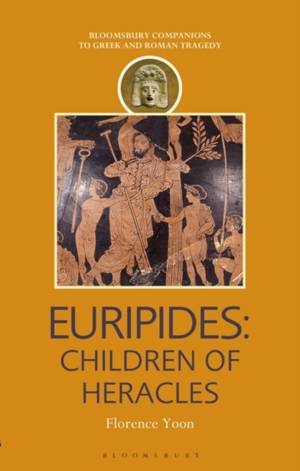
- Afhalen na 1 uur in een winkel met voorraad
- Gratis thuislevering in België vanaf € 30
- Ruim aanbod met 7 miljoen producten
- Afhalen na 1 uur in een winkel met voorraad
- Gratis thuislevering in België vanaf € 30
- Ruim aanbod met 7 miljoen producten
Zoeken
Omschrijving
This book is an accessible guide through the many twists and turns of Euripides' Children of Heracles, providing several frameworks through which to understand and appreciate the play. Children of Heraclesfollows the fortunes of Heracles' family after his death. Euripides confronts characters and audience alike with an extraordinary series of plot twists and ethical challenges as the persecuted family of refugees struggles to find asylum in Athens before taking revenge on its enemy Eurystheus. It is a fast-paced story that explores the nature of power and its abuse, focusing on the appropriate treatment and behaviour of the powerless and the obligations and limitations of asylum. The audience must continually re-evaluate the play's moral dimensions as the characters respond to complications that range from the fantastic to the frighteningly realistic.
Yoon situates Children of Heraclesin its literary context, showing how Euripides constructs a unique kind of tragic plot from a wide range of conventions. It also explores the centrality of the dead Heracles and the leading role given to the socially powerless and the dramatically marginal. Finally, it discusses the historical contexts of the play's original performance and its political resonance both then and now.
Yoon situates Children of Heraclesin its literary context, showing how Euripides constructs a unique kind of tragic plot from a wide range of conventions. It also explores the centrality of the dead Heracles and the leading role given to the socially powerless and the dramatically marginal. Finally, it discusses the historical contexts of the play's original performance and its political resonance both then and now.
Specificaties
Betrokkenen
- Auteur(s):
- Uitgeverij:
Inhoud
- Aantal bladzijden:
- 176
- Taal:
- Engels
- Reeks:
Eigenschappen
- Productcode (EAN):
- 9781350076754
- Verschijningsdatum:
- 9/01/2020
- Uitvoering:
- Hardcover
- Formaat:
- Genaaid
- Afmetingen:
- 140 mm x 216 mm
- Gewicht:
- 344 g

Alleen bij Standaard Boekhandel
+ 390 punten op je klantenkaart van Standaard Boekhandel
Beoordelingen
We publiceren alleen reviews die voldoen aan de voorwaarden voor reviews. Bekijk onze voorwaarden voor reviews.








